
Le muscat de noêl
Les premiers Muscat de Rivesaltes de l’année sont mis en bouteille à la fin des vendanges et le Muscat de Noël se déguste à partir du troisième jeudi de novembre.

Les premiers Muscat de Rivesaltes de l’année sont mis en bouteille à la fin des vendanges et le Muscat de Noël se déguste à partir du troisième jeudi de novembre.
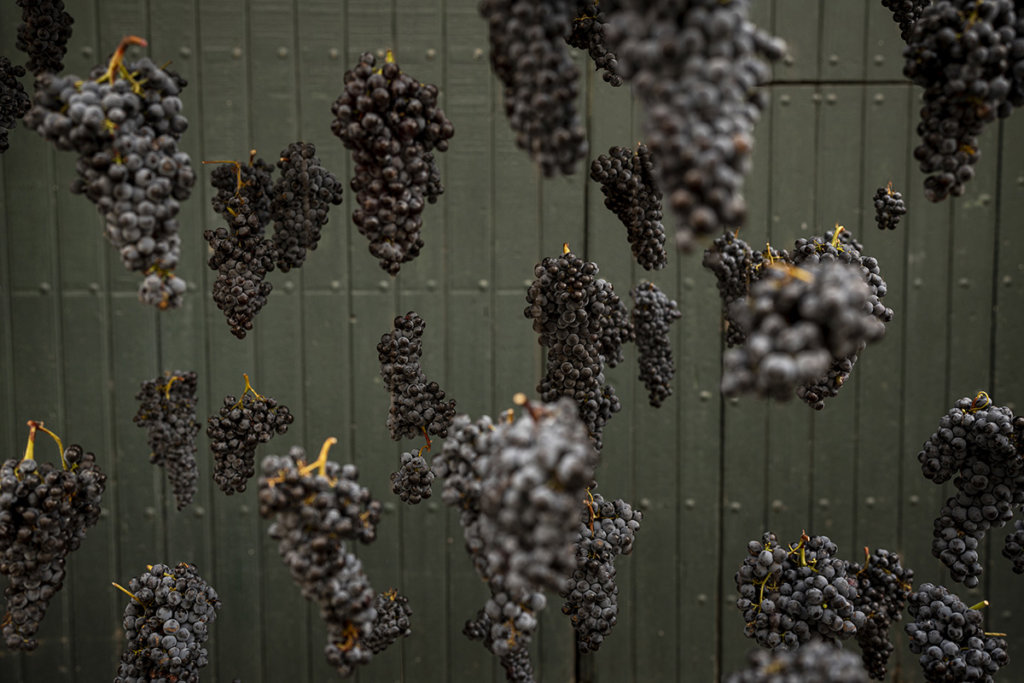
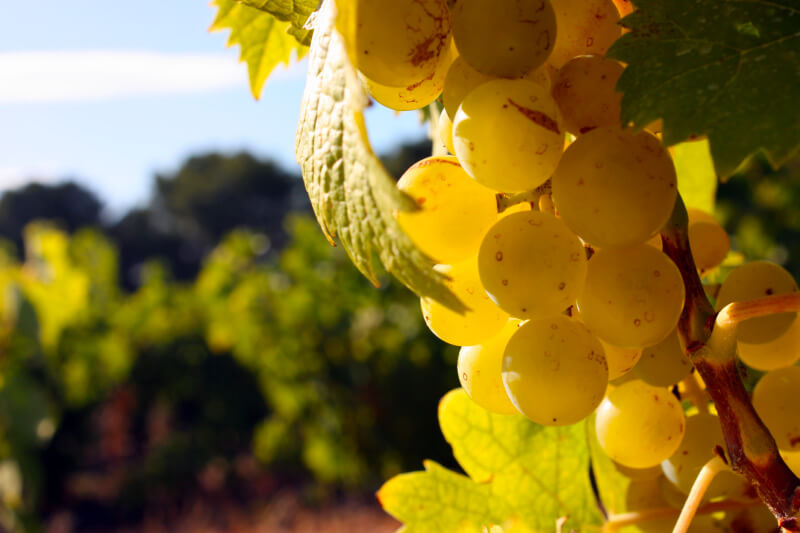
Il faut remonter 27 générations pour comprendre les origines de la famille Jonquères d’Oriola, passionnée par le vin et le monde équestre. De père en fils, ils transmettent leur savoir-faire et leur amour de la vigne pour faire rayonner les vins du château de Corneilla.
Depuis 1485, leurs vins sont produits dans la région du Roussillon, dans le sud de la France. C’est précisément au château de Corneilla del Vercol, lieu incontournable du patrimoine culturel catalan, que la magie opère. Situé entre Perpignan et Collioure, ce château a été bâti au XIIIème siècle par les Templiers. La famille Jonquères d’Oriola produit de l’huile d’olive bio en plus de ses 23 vins (rouges, rosés, blancs et vins doux naturels) sur six appellations différentes : AOP Côtes du Roussillon, AOP Côtes du Roussillon Villages Les Aspres, AOP Collioure, AOP Muscat de Rivesaltes, AOP Rivesaltes et IGP Côtes Catalanes. Grâce à la qualité de leurs vins, le château de Corneilla est régulièrement récompensé lors de grands concours nationaux et internationaux.
“Notre philosophie familiale est de sublimer notre terroir à travers chaque millésime”.
Animés par la même passion, les hommes se succèdent dans la famille Jonquères d’Oriola pour transmettre aux générations futures un vignoble le plus sain possible. Après un tour du monde œnologique et 10 années passées à travailler aux côtés de son père Philippe, c’est aujourd’hui William Jonquères d’Oriola qui est aux commandes du château de Corneilla.
Fort de cette complicité intergénérationnelle, des nouvelles méthodes culturales et techniques de vinification découvertes lors de ses voyages œnologiques, William Jonquères d’Oriola fait évoluer le domaine pour répondre aux enjeux de son époque. L’intégralité des vignes du domaine sont certifiées HVE4 (Haute Valeur Environnementale) et le verger d’oliviers est cultivé en Agriculture Biologique pour produire une huile d’olive vierge extra Bio avec des variétés locales. L’excellence des vins, la valorisation de nos terroirs et les mesures éco environnementales appliquées sont un challenge permanent pour le domaine.
Nos 95 hectares de vignes sont répartis sur différentes propriétés localisées entre le sud de Perpignan et Collioure, dans le Roussillon.
L’ensemble de notre vignoble s’étend sur six appellations :
Nous mettons en place différentes actions dans nos vignes afin de favoriser une activité biologique continue. Comprendre le fonctionnement de la biodiversité est essentiel pour reconstituer des sols vivants tout en encourageant une agriculture régénératrice. Dans nos 95 hectares de vignes, nous mettons en pratique des méthodes de culture alternatives.
L’objectif premier est de laisser l’activité biologique en autonomie et ainsi, favoriser une faune auxiliaire dans nos vignes.
Un cépage est une variété de vigne. Il en existe une multitude qui sont caractérisés par des particularités physiques et gustatives.
Comment peut-on les différencier ? La couleur, la taille des raisins et la forme des feuilles distinguent un cépage d’un autre.
Le Grenache blanc est implanté essentiellement dans le sud de la France où il côtoie son cousin le Grenache noir. Ses grappes sont plutôt grandes et ses baies très sucrées sont de taille moyenne. Cette douceur permet d’élaborer des vins naturels, d’une belle rondeur et longs en bouche comme le Rivesaltes. Cultivé en sol sec, le Grenache gris ne craint ni le vent ni les longues périodes de sécheresse.
Le Macabeu, d’origine catalane, est reconnaissable à ses grosses grappes et ses baies moyennement grosses. Vigoureux et productif, ce cépage donne des vins fruités et peu acides.
Le Mourvèdre est un cépage espagnol, qui peut être associé à d’autres cépages tels que le grenache et la syrah. Le vin fabriqué avec ce cépage est riche en arômes, faible en acidité et dispose d’une structure tannique de bonne qualité.
La Syrah est un cépage noir que l’on retrouve en Provence, dans le Languedoc-Roussillon et dans le Sud-Ouest de la France. Quant à la Roussanne, c’est un cépage blanc que l’on peut également rencontrer en Savoie. La Syrah a besoin de sols riches en oligo-éléments pour se nourrir. De cette manière, ce cépage peut produire des grappes d’une belle couleur noire bleutée aux baies moyennes.
Le Carignan a besoin de chaleur et d’ensoleillement qu’il peut trouver notamment dans le Languedoc. Il apprécie les terres sèches et peu fertiles, ce qui permet d’offrir un vin généreux et puissant à la fois.
Le Chardonnay est un cépage blanc issu de la Bourgogne. Son raisin doré offre de grands vins blancs aux arômes variés aux notes d’agrumes et de fruits secs. Quant au Viognier, il est apprécié pour ses arômes de citron vert, d’abricot et de fleur d’amandier.
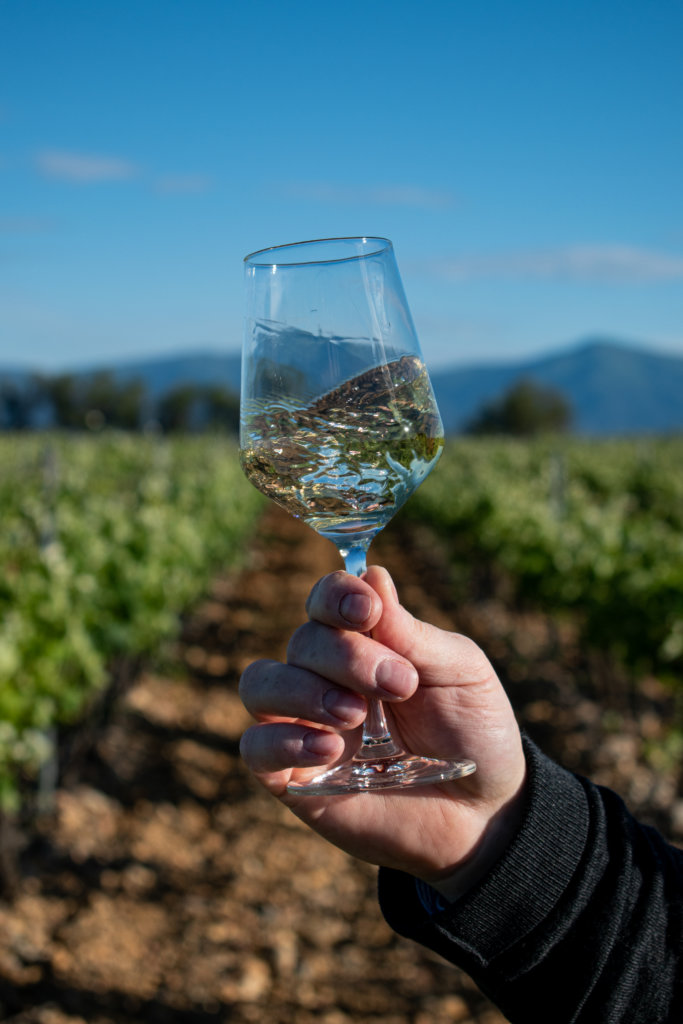
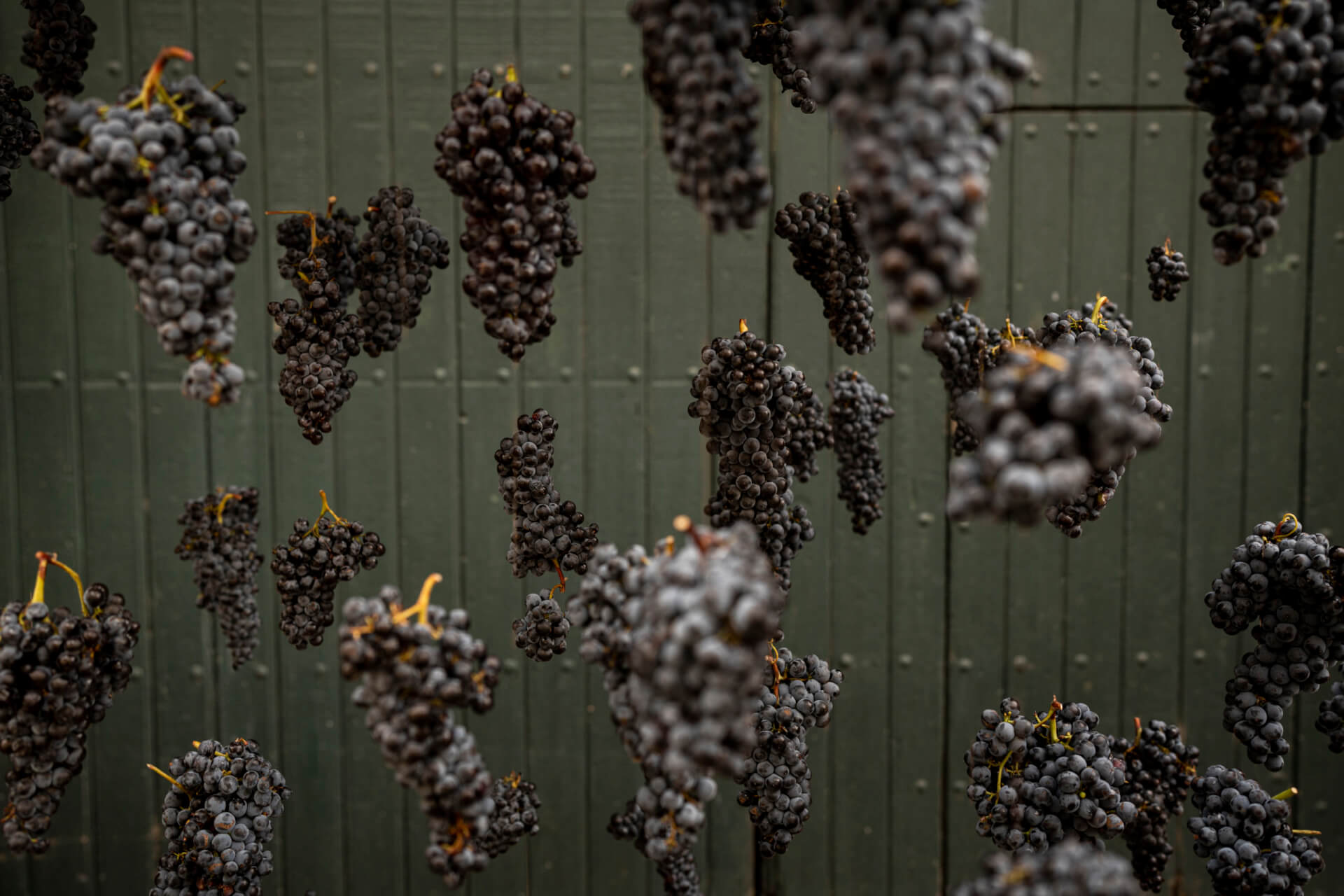
Médailles 97/100 Décanter,
Médaille d’Or au Concours Général Agricole de Paris 2022. Ce concours récompense la qualité des meilleurs produits et animaux du terroir français.
Au nez, ce vin rouge dévoile des arômes de fruits rouges et noirs, légèrement épicés. Cette cuvée accompagnera à merveille un filet mignon sauce Grand Veneur, des tournedos Rossini ou un plateau de fromages affinés.
Ce vin rouge présente des arômes de cassis et de mûre, légèrement vanillés et fumés. Puissant et légèrement épicé, il accompagne à merveille une côte de bœuf, un civet de chevreuil ou des tournedos Rossini.
Médaille d’argent au Concours Mondial des Féminalise 2022.
Les vins y sont exclusivement dégustés par des femmes professionnelles et passionnées.
À la recherche d’un vin rouge qui fera succomber vos papilles ? Nous avons celui qu’il vous faut. Avec ses notes de fruits rouges et noirs (groseille, cassis, mûre), il ne laisse personne indifférent. En plus d’être puissant, ce vin possède beaucoup de fraîcheur et une belle densité. Optez pour l’Indigène pour accompagner un magret de canard ou des plats de cuisine méditerranéenne.
Médaille d’argent au Concours Terre de Vins 2022, dont les maîtres-mots sont expertise, rigueur et simplicité.
Avec des arômes de torréfaction et de fruits rouges, ce vin rouge surprend par sa fraîcheur et sa générosité. Ample et intense, il est apprécié pour son bel équilibre marqué par des tanins fins et élégants. Il sublime autant une viande maturée que du gibier ou des fromages affinés.
Ce vin rouge met en évidence des arômes de fruits rouges (pruneau, cassis et framboise). Avec sa fraîcheur, cette cuvée accompagne parfaitement une côte de bœuf, des grillades, des volailles fermières ou un plateau de fromages affinés.
En bouche, ce vin rouge propose des arômes de fruits noirs et de garrigue. Cette cuvée sublimera une côte de bœuf maturée ou des plats de cuisine méditerranéenne.
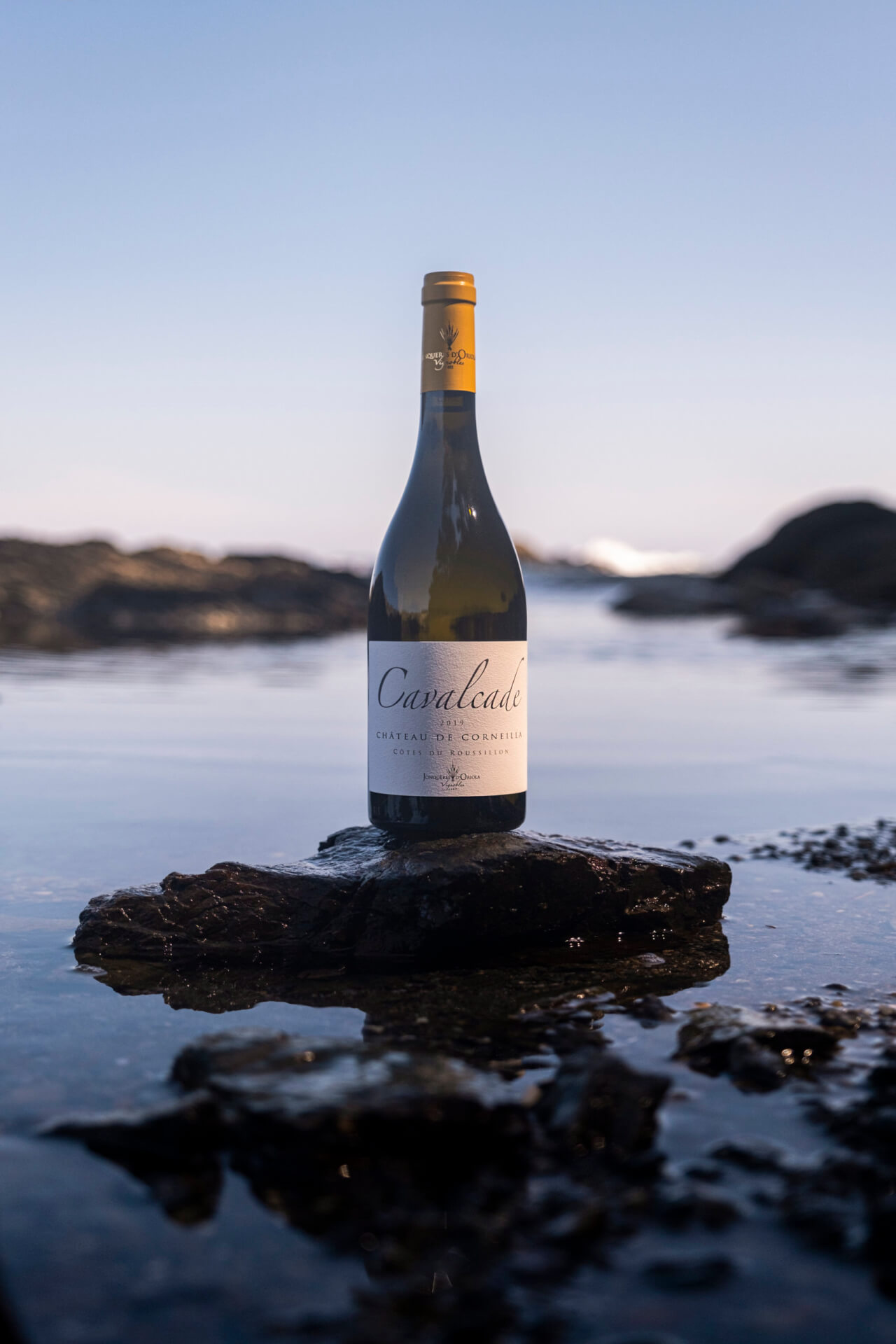
Vous êtes à la recherche d’un vin blanc rempli de fraîcheur ? Sec, sucré, plutôt moelleux ou liquoreux, nous avons tout ce qu’il faut !
Le vin blanc s’accorde avec tous les plats, chauds ou froids, salés ou sucrés. À consommer tout au long de l’année, le vin blanc accompagne à merveille les plats onctueux et sucrés ou les desserts. Laissez-vous tenter par nos vins blancs…
Les vins blancs peuvent être secs ou doux, en fonction du niveau de sucre restant dans le vin après la fermentation. Ils peuvent également être légers ou plus robustes, en fonction du type de raisin utilisé et de la méthode de vinification. Le vin blanc est souvent associé à des plats plus légers et plus frais, tels que les fruits de mer et les salades, mais il peut également être utilisé pour accompagner des plats plus lourds tels que les poulets et les viandes blanches.
En bouche, ce vin blanc présente une attaque fraîche et ample. L’ensemble est harmonieux avec des notes de fruits à chair blanche et une pointe minérale. Il accompagnera un plateau de fruits de mer, des soles meunières, des filets de rougets ou un plateau de fromages affinés.
Ce vin blanc possède un nez frais et expressif de fruits à chair blanche, suivi de notes grillées et vanillées. Marqué par l’élevage sur lies, il possède des arômes d’épices fraîches et de pain brioché. Cette cuvée accompagnera à merveille un homard grillé au beurre blanc, un plateau d’huîtres ou un risotto aux fruits de mer.
Harmonieux et tonique, ce vin blanc surprend par sa vivacité et sa rondeur. Il présente une robe or pâle avec des arômes de fruits blancs à noyau. Pour un ensemble distingué, optez pour cette cuvée.
Ce vin blanc présente une robe jaune pâle avec des notes de fruits blancs et de fruits à noyau. Intense et florale, cette cuvée sublime merveilleusement bien les fruits de mer, les poissons grillés ou les fromages affinés.
Ce vin blanc est généreux, franc et ample. Avec ses touches fruitées, ce Chardonnay convient parfaitement avec un risotto aux fruits de mer, un curry de crevettes ou des fromages affinés.
D’une élégante fraîcheur, ce vin doux naturel met en évidence une robe or pâle et des arômes de fruits frais (abricots, pêche) et de fruits exotiques (litchi). Rien de mieux pour accompagner un foie gras, une tarte aux citrons meringuée ou des rousquilles catalanes.
Un vin rosé bien frais est fortement apprécié en été, mais pas seulement. Ses arômes nous bouleversent tout au long de l’année.
Ses notes de fruits rouges et d’agrumes sont autant de raisons pour apprécier ce vin à l’apéritif, seul ou entre amis.
Délicat, élégant, intense, notre large gamme vous permettra de trouver le vin rosé qu’il vous faut.
Ce rosé 100% fraîcheur présente une robe rose pâle qui ravira vos papilles. Si vous appréciez particulièrement les arômes de fruits rouges, vous ne pourrez que succomber. Ce vin est un plaisir immédiat en bouche. En s’associant parfaitement à des viandes blanches et à des plats asiatiques, cette cuvée est une valeur sûre.
La fraîcheur de ce rosé offre un bel équilibre et une élégance aromatique hors du commun. Ce vin se marie parfaitement avec vos apéritifs-dinatoires, accompagné d’une ribambelle d’amis ! Associez ce rosé avec des papillotes de saumon ou un risotto aux fruits de mer. Vous nous en direz des nouvelles…
Élégant et intense, ce rosé présente des arômes de fruits blancs et une élégante fraîcheur. Il accompagnera à merveille des plats comme le tartare de thon, les plats asiatiques et une belle assiette de fromages. Si vous ne l’avez pas encore dégusté, c’est le moment !
Comme l’Héritage, ce vin rosé est apprécié pour ses notes fruitées de groseille et de framboise. Il a également des notes épicées et une belle fraîcheur acidulée. Idéal pour l’été, ce vin complète à merveille des plats de cuisine asiatique ou des grillades.

Nous sommes heureux de vous annoncer que nos cuvées ont été primées par le prestigieux concours Decanter World Wine Awards (DWWA), un des plus influents concours de vin au monde.
Apparu en 1975, il est aujourd’hui la référence dans ce domaine. Avec un jury de classe mondiale et un processus d’évaluation rigoureux, nous sommes d’autant plus fiers des médailles d’argent que nous avons obtenues. Grâce à un travail acharné, nous arrivons à produire des vins toujours plus qualitatifs, sans sulfites ajoutés.
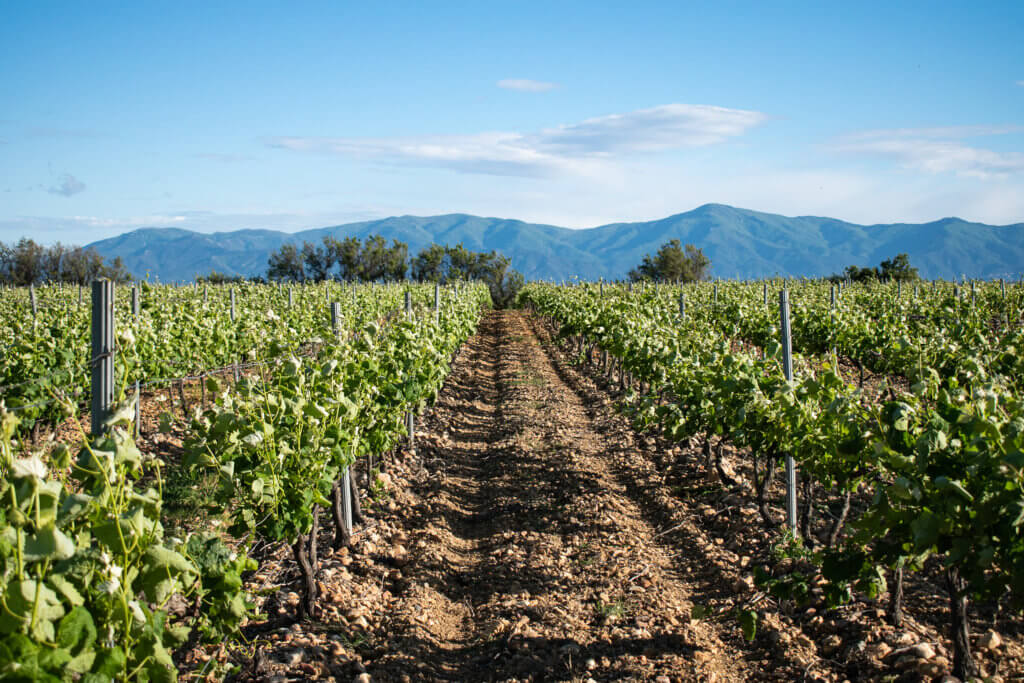
Après le 97/100 reçu par Cavalcade rouge 2017 l’année dernière, voici les lauréats 2022 :
90/100
Nous commençons par vous présenter la cuvée Château de Corneilla, “L’Indigène”. Aux notes de fruits rouges et de fruits noirs s’ajoutent des arômes d’épices douces. En bouche, ce vin est puissant et rond avec une belle densité. Ainsi, cette cuvée accompagnera à merveille une côte de veau, un agneau de 7h ou des fromages raffinés.
91/100
Légèrement vanillée et fumée, la cuvée Château de Corneilla “Pur sang” est reconnue pour ses arômes de cassis et de mûre. Elle présente une belle intensité aromatique qui s’associe parfaitement à une côte de bœuf ou un civet de chevreuil.
91/100
La cuvée Château de Corneilla “Cavalcade rouge” possède une robe rouge intense aux reflets pourpres. Lors de sa dégustation, elle dévoile des arômes de fruits rouges et noirs. Cette cuvée accompagnera à merveille un filet mignon sauce Grand Veneur, des tournedos Rossini ou un plateau de fromages affinés.
90/100
Avec ses arômes de torréfaction et de réglisse, la cuvée Château de Corneilla “Les Candelles” s’associera à merveille avec une viande maturée, du gibier ou des fromages affinés. Marqué par des tanins fins et élégants, ce vin rouge présente une robe pourpre aux reflets violine.
92/100
Pour finir, nous avons été récompensé pour la cuvée Château de Corneilla “Icône”, reconnue pour être élégante et racée. Ses quelques notes de garrigue offrent en bouche une puissante générosité, tout en rondeur.
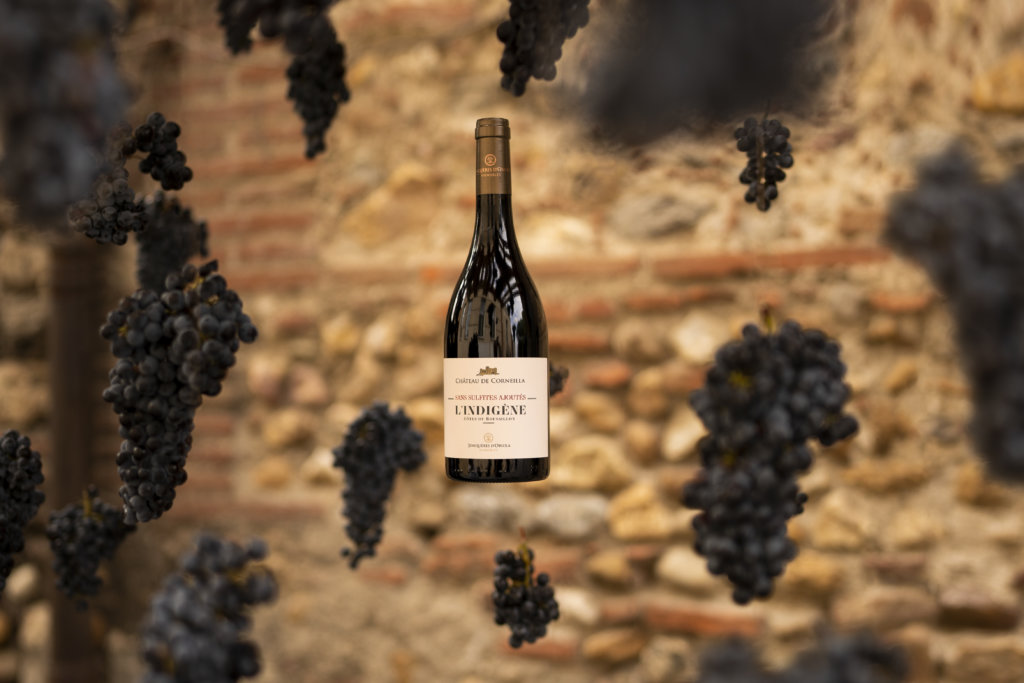
Avec sa robe rubis grenat, cette nouvelle cuvée possède un nez fin et frais aux notes de fruits rouges et noirs (groseille, cassis, mûres) avec la typicité de la macération carbonique.
En bouche, ce vin puissant et rond présente des notes de fruits noirs et d’épices.
Il possède beaucoup de fraicheur et une belle densité. Depuis plusieurs années, nous conduisons notre vignoble de manière éco-responsable en considérant la préservation de notre terroir et le respect de l’environnement comme une priorité.
L’Indigène – sans sulfites ajoutés – est issu d’une sélection de parcelles non traitées depuis des années (sans pesticides ni herbicides).
Suite à ses études d’œnologie, William Jonquères d’Oriola s’est inspiré de la diversité des exploitations viticoles et de leurs modes de culture. Au Chili notamment, la vigne est cultivée de manière ancestrale avec une véritable variété dans les cépages. D’après ce constat, William s’est muni des meilleures techniques viticoles et de vinification afin de proposer, à son tour, une cuvée sans sulfites ajoutés.
L’ambition est toujours la même : faire des vins avec de l’intensité, de la finesse et de la fraîcheur. La récolte se veut manuelle afin de proposer un vin droit, vivant et naturel. Leur vin est “sans sulfites ajoutés” et leurs parcelles sont exploitées par une agriculture raisonnée labellisée HVE 3. William Jonquères d’Oriola se soucie de l’environnement et de l’impact de l’agriculture sur ce dernier. Être conscient de l’impact environnemental, se challenger et sortir de sa zone de confort font partie intégrante du métier de vigneron. Il est essentiel de proposer des techniques les plus naturelles possible.
Pour cette cuvée, les vendanges sont réalisées à la main. Tôt le matin, l’opération requiert de nombreuses personnes afin de récolter rapidement le raisin et en garder toute sa fraîcheur. À savoir que leurs vins ont la particularité d’être vinifiés uniquement avec les levures indigènes, c’est-à-dire les levures naturelles de la vigne qui permettent de retranscrire la typicité du terroir.
La fermentation alcoolique et la fermentation carbonique, également appelée “fermentation intracellulaire”, sont deux processus importants durant lesquels le jus de raisin va se transformer en alcool sous l’action du sucre contenu dans la pulpe et des levures indigènes. Par la suite, une fois la fermentation carbonique terminée, l’élevage se fait en foudre de chêne et en cuve. Afin d’élaborer un grand vin, ils appliquent un geste ancestral 2 fois par jour : le pigeage. Il consiste à enfoncer les matières solides qui flottent au sommet de la cuve dans le moût liquide. De cette manière, l’extraction des constituants du raisin sera facilitée.
Aux notes de fruits rouges et de fruits noirs s’ajoutent des arômes d’épices douces, pour une touche d’élégance. En bouche, ce vin est puissant et rond avec une belle densité. Cette cuvée accompagnera à merveille une côte de veau, un agneau de 7h ou des fromages affinés.
Afin de conserver toute la fraîcheur de cette cuvée, il est fortement recommandé d’éviter les chocs thermiques. Idéalement, nous vous conseillons de l’ouvrir à 16° et de la conserver dans une cave tempérée.
Leur volonté est de produire des vins structurés grâce à une vinification respectueuse du terroir. En effet, une bonne structure est indispensable pour que le vin puisse bien vieillir. Différents éléments sont à prendre en compte : une belle acidité, des tanins bien présents et des arômes prononcés. William et toute son équipe mettent tout en place pour préserver au maximum l’intégrité de la grappe et en conserver toute sa fraîcheur.
Au Château de Corneilla, la culture de nos vignes s’est orientée vers un véritable respect de l’environnement. La biodiversité et la régulation des écosystèmes doivent être protégées.
Nous avons ainsi mis en place dans nos vignes des actions qui ont pour but de favoriser une activité biologique continue et de permettre à la vigne de s’adapter aux changements climatiques. L’ensemble de nos parcelles sont exploitées par une agriculture raisonnée labellisée HVE 3 (Haute Valeur Environnementale).
Les vignes en appellation AOP Côtes du Roussillon sont plantées sur un terroir de terrasses quaternaires façonné par le massif des Pyrénées et situé au bord de la mer Méditerranée. Nous y menons avec conviction une réflexion sur la biologie des sols en essayant de comprendre leur fonctionnement par la biodiversité pour favoriser l’agriculture régénératrice. En parallèle, nous appliquons des méthodes alternatives de culture pour laisser l’activité biologique en autonomie.
Au Château de Corneilla, nous avons élaboré une nouvelle cuvée d’appellation AOP Côtes du Roussillon nommée Icône. Son assemblage est fait de Grenache Noir, Mourvèdre et Syrah.
Ce vin rouge possède une robe pourpre limpide aux reflets violine. Son nez est très expressif et flatteur sur le fruit noir (cassis) avec quelques notes épicées de garrigue. C’est un vin très élégant et racé avec une bouche complexe, tout en rondeur, en puissance et en générosité. Issu de vendanges manuelles, d’une fermentation à basse température et d’une cuvaison 5 semaines, il a été élevé en fût de chêne français. Il pourra être gardé en cave près de 10 ans.
Notre cuvée Icône a été médaillée d’argent avec un score de 92 au concours Decanter World Wine, l’un des concours les plus importants et influents au monde. Nous recommandons de servir ce vin à une température de 16°C. Il est idéal pour accompagner une viande maturée, un tournedos Rossini, du gibier, un chapon farci ou encore des fromages affinés.
Découvrez notre nouvelle cuvée Icône au prix unitaire de 39€.
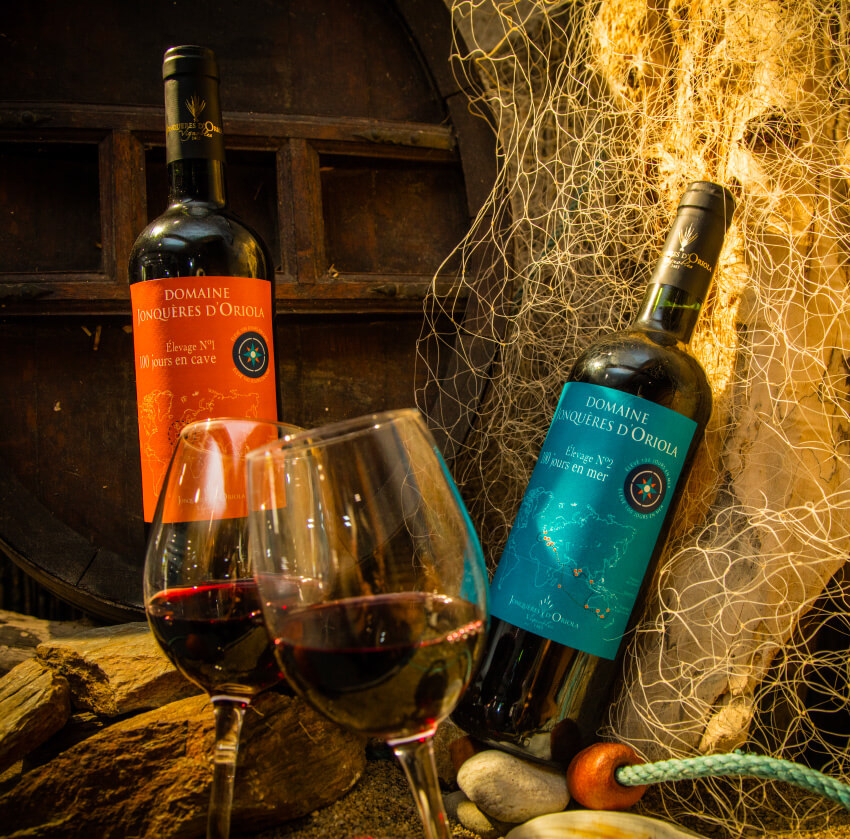
William Jonquères d’Oriola propriétaire du Château de Corneilla del Vercol dans le Roussillon, réalise son projet fou : faire faire le tour du monde en bateau à son vin pour comparer son vieillissement à celui resté sur la terre ferme.
De quoi offrir une expérience de dégustation jamais vue. Cette expérience a été faire avec un partenaire indispensable pour l’aventure : Le Petit Ballon (vente de vin sur Internet).
L’expérience Ainsi, William Jonquères d’Oriola a fait partir la moitié d’une cuvée sur un bateau à travers le monde. Parti du Roussillon pour le Havre en passant par le Canal de Suez, la Réunion, l’Australie, l’Asie, l’Inde, le Golfe Persique, la Méditerranée puis de retour au Havre, ce vin du Domaine Jonquères d’Oriola a traversé les océans pendant 100 jours.
L’autre moitié de la cuvée a été quant à elle, élevée pendant la même période dans les caves de Corneilla del Vercol. « Après avoir lu une légende qui racontait que les vins se bonifiaient après une traversée en mer, j’ai voulu le vérifier en faisant deux élevages différents pour un même vin : en mer et sur terre. J’ai alors contacté Le Petit Ballon, qui distribuait déjà mon vin, pour savoir s’ils souhaitaient me suivre dans cette aventure.
Ils ont tout de suite accepté grâce à leur ouverture d’esprit et la volonté de faire bouger les lignes que nous avons en commun. » William Jonquères d’Oriola, vigneron.

Les vendanges 2022 ont commencé particulièrement tôt cette année : dès le 28 juillet. Avec presque vingt jours d’avance sur les autres années, c’est une récolte inédite dans l’histoire du Château de Corneilla.
De nombreux facteurs expliquent ce démarrage anticipé, notamment la floraison précoce qui a eu lieu au printemps et la forte sécheresse : sans pluie significative depuis 4 mois dans les vignes. L’impact du climat est véritablement présent sur les récoltes avec des rendements en jus plus faibles qu’habituellement. Ces dernières années, les équipes du Château de Corneilla ont déployé de nombreuses actions simultanées pour permettre d’accompagner les vignes dans le virage du réchauffement climatique. Le développement de matières organiques dans les sols, les semis d’hiver qui ont apporté de la biomasse. Le but est de créer de l’humus dans les sols. Ces différentes actions ont déjà fait leurs preuves en permettant de limiter les carences en eau.
La récolte du raisin est l’une des étapes les plus importantes dans le cycle de la vigne. Chaque cépage a besoin d’un temps différent pour arriver à maturité et développer ses saveurs qui apportent à nos vins leurs goûts uniques. C’est pour cette raison que nos raisins ne sont pas tous récoltés au même moment.
Le Château de Corneilla a d’abord débuté les vendanges avec Les Muscats Petits Grains. Ce cépage précoce sera utilisé pour élaborer notre Infini blanc (IGP Côtes Catalanes). Les Syrah situées dans le massif des Aspres ont été intégralement récoltées, elles serviront principalement pour le fameux Cavalcade rouge. Il est l’heure désormais d’effectuer des pigeages manuels deux fois par jour dans les cuves. Cette étape consiste à immerger les grains de raisin de la surface de la cuve dans le moût en fermentation afin d’en extraire les polyphénoles (matières colorantes, tanins, arômes…) si importants afin de structurer les vins.
Dans les caves du Château de Corneilla. Les vins blancs en fûts sont encore en fermentation. Des batonnages réguliers sont réalisés pour donner du gras et du volume aux vins. Pour les vins rouges, nous avons commencé les décuvages (action qui consiste à soutirer le vin de la cuve afin de le séparer des pellicules appelées marc).
Les premiers assemblages ont été réalisés cette semaine, et la mise en fûts de 500 litres est imminente. Place à l’élevage maintenant qui permettra d’affiner le profil des vins. Encore un peu de patience avant de pouvoir goûter nos millésimes 2022 !